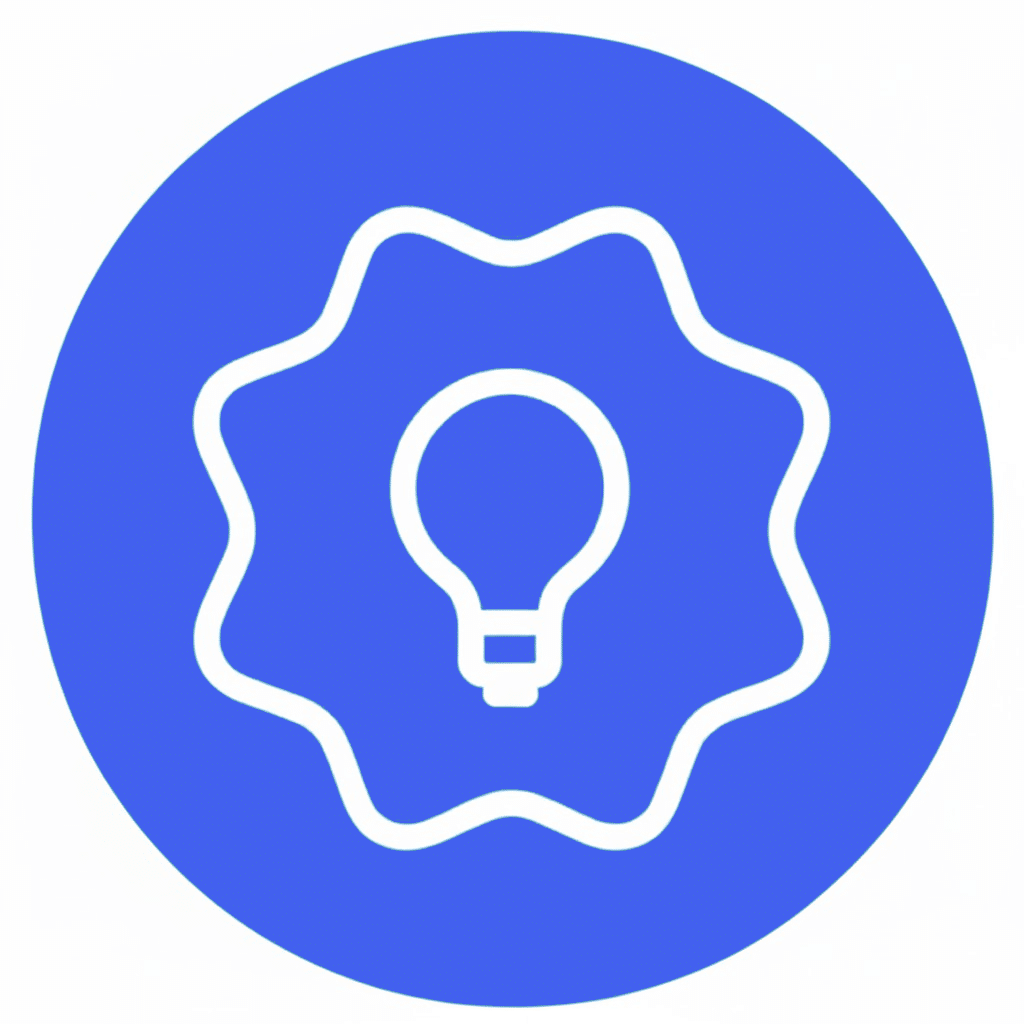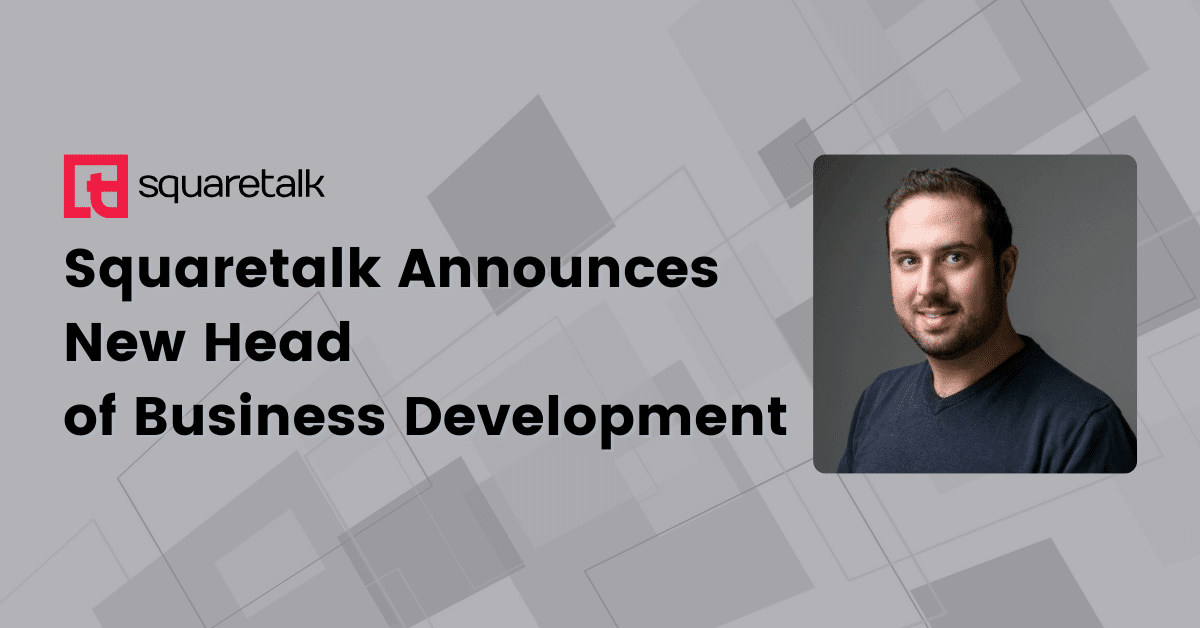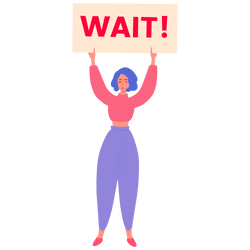
Summary
Most sales managers don’t track the key performance indicators (KPI) vital for sustainable success and growth, and as a result, struggle to turn raw call data into strategic insights that boost conversions, reduce costs, and maximize team performance.
This comprehensive guide explains:
– Why metrics differ from KPIs and how this impacts strategy
– The 5 game-changing metrics (Conversion rate, First Call Close Rate, Average Handle Time, Call Abandonment rate, and Agent Utilization)
– Actionable tips for improvement of each KPI
– How AI-powered analytics are reshaping performance measurement
Companies that leverage these strategies gain a 360-degree view of the sales funnel, enabling proactive problem-solving and data-driven team optimizations.
Monitoring performance gives you insights into agent productivity, sales effectiveness, knowledge gaps, and customer satisfaction.
But with plenty of contact center KPIs and metrics available, which should you prioritize?
We’ll walk you through the top 5 key contact center metrics to focus on to manage your sales team’s overall productivity, improve customer satisfaction, and make data-driven decisions that drive business growth.
The Role of Metrics in Call Center Performance
Management
Metrics vs. KPIs: What’s the Difference?
Metrics are general performance indicators that track various aspects of your call center operations. They include all possible data points you can track, such as total calls handled or average talk time.
Key Performance Indicators (KPIs), on the other hand, are strategic contact center performance metrics tied directly to your business goals. They show whether you are meeting your objectives or not.
For example :
- Metric : 500 calls answered daily (raw data that measures an activity volume)
- KPI : A 25% conversion rate from those calls (insight that connects the activity to a business outcome, e.g., turning conversions into revenue)
KPIs answer broad questions like “Are agents performing consistently at high standards?” (e.g., quality assurance score) or “Are customers happier after interacting with us?” (e.g., Customer Satisfaction Score).
Metrics are the puzzle pieces; KPIs show you the big picture.
Why this matters for sales teams : If your goal is to boost upsells, for example, tracking the number of upsell attempts (metric) is necessary to evaluate and optimize performance. But the upsell conversion rate (KPI) tells you whether those efforts are actually delivering results that matter to your business. Without this distinction, you may spend time analyzing data that doesn’t directly contribute to your objectives.
Data-Driven Decisions : Turning Numbers into Action
Data-driven companies are 23x more likely to acquire new customers.
Here’s how metrics empower your team :
Spot Trends Before They Become Problems
Without tracking the right metrics, you wouldn’t even notice when small issues start to snowball. For example, if you’re not measuring Average Handle Time (AHT), you might not realize that call durations have been creeping up. That could lead to blaming agents for inefficiency—when in reality, a new product launch has made calls more complex and lengthy.
Metrics let you see the trend early and take action, like improving training, before it becomes a bigger problem.
Align Teams Around Shared Goals
Metrics create a common language. When sales, support, and IT all focus on reducing Call Abandonment Rate, for example, they can coordinate efforts more effectively—like optimizing call routing, improving response times, or adjusting staffing.
A shared understanding of success leads to better teamwork and decision-making.
Justify Investments to Stakeholders
Data turns abstract ideas into tangible business value, making it easier to secure a buy-in.
Want a budget for AI tools, for example? Use metrics to demonstrate an impact : a 10% improvement in the First Call Close Rate could translate to $50K monthly savings.
5 Call Center Metrics To Track For Overall Performance Management in 2025
1. Conversion Rate
Your conversion rate is the ultimate measure of success, tracking the percentage of contacts resulting in a successful outcome. It shows the efficiency of both individual team members and campaigns.
Why It Matters :
The conversion rate indicates how well your agents turn prospects into paying customers and helps you identify which lead sources perform best. When you focus on improving conversion rate, you boost revenue and create a more efficient pipeline.
How To Calculate It :
Conversion rate is the number of completed sales divided by the total number of calls you made or received, multiplied by 100 :
Conversion Rate=(Number of Conversions/Total Number of Opportunities)×100
Imagine you had 1,000 calls this month and converted 150 into paying customers. Your conversion rate would be 15%.
Tips For Improvement :
- Optimize Lead Qualification and Scoring : Segment prospects based on certain criteria, like behavior or demographics, to prioritize high-potential leads instead of dialing randomly.
- Improve Agent Training : Provide micro-coaching sessions focused on objection handling and rapport building.
- Leverage Technology Integration : Use customer relationship management (CRM) systems to personalize your pitch.
2. First Call Close Rate
Sometimes called First Call Resolution for sales-focused teams, First Call Close Rate (FCCR) measures how often your team finalizes a sale on the very first call. It applies especially to sales organizations that handle shorter, more direct customer journeys.
Why It Matters :
When your team closes a sale on the first call, it means your process is streamlined. A high FCCR rate maximizes revenue without extra follow-ups and lowers the cost per acquisition. It can also reduce agent turnover as people making good commissions are less likely to resign.
A high first-call close rate suggests that your sales team is well trained, your product is easy to understand, and your pitch resonates with the customer’s expectations and needs.
A low FCCR rate might indicate your leads aren’t ready to buy, are predominately cold, or aren’t properly qualified.
How To Calculate it :
First Call Close Rate = (Number of Sales Closed on First Call/Total First Calls) × 100
For instance, if your team receives 500 first calls in a given period and closes 75 deals on those calls, your first call close rate is 15%.
Tips For Improvement :
- Pre-Qualify Leads Before Calling : Use lead scoring to prioritize high-probability buyers and ensure agents talk to decision-makers with the authority to purchase.
- Make More Effective Discoveries : Train your team to establish trust and assess needs quickly. This helps you offer relevant features and services.
- Use Clear Scripts : Develop targeted value propositions for different customer segments and structured but flexible scripts that guide agents through the conversation. Include “reason for calling now” for urgency, relevance, and context, which makes it easier for the prospect to make an immediate decision.
3. Average Handle Time (AHT)
Average Handle Time is the total of your talk time, hold time, and after-call work. Instead of just measuring speed, AHT in sales seeks a balance between efficiency and effectiveness.
Why It Matters :
Unlike with support teams, where lower AHT is almost always better, sales teams need to find the middle between quality and quantity—closing deals quicker without cutting conversations short.
A low AHT can indicate efficiency, allowing your team to contact more leads in a given period. But if it’s too low, you may be rushing interactions.
A high AHT can indicate in-depth customer engagement or agents spending too much time on unqualified leads.
Finding the right balance is crucial to increasing your team’s productivity, improving workflows, optimizing training, allocating resources, and ensuring a better customer experience.
How To Calculate it :
AHT = (Total Talk Time + Total Hold Time + After Call Work Time)/Total Number of Calls Handled
For example, your team spent 5,000 minutes in total talk time, 500 minutes on hold, and 1,000 minutes on after-call work across 1,000 calls. Your AHT would be :
(5000 + 500 + 1000)/1000= 6.5 minutes
Tips For Improvement :
- Utilize Efficient Call Routing : Use intelligent routing to connect prospects with the right sales agent. This will reduce the time wasted on unqualified, low-value, or mismatched leads without hurting your conversion rates.
- Implement Knowledge Bases : Equip agents with quick references for product descriptions, FAQs, and scripts. This will allow them to quickly access information mid-conversation, reducing time spent searching for answers.
- Streamline Post-Call Tasks : Automate after-call work with integrated CRM to auto-populate data from calls or AI-powered workflows. This allows sales reps to focus more on active selling than manual admin tasks.
4. Call Abandonment Rate
Call Abandonment Rate (CAR) tracks the percentage of inbound and outbound calls that end before a sales rep has the chance to speak with a prospect.
CAR is a crucial metric for teams that handle incoming leads or sales inquiries.
People usually abandon inbound calls because of long wait times and agent unavailability. In outbound operations, it usually happens when the system dials a prospect but doesn’t connect them to a rep because there aren’t any free.
Why It Matters :
A high abandonment rate means lost opportunities, lower conversion rates, reduced Return on investment (ROI), and wasted marketing budget. It may indicate long wait times, which can frustrate high-intent prospects and translate into lost revenue in a sales environment. Remember, prospective customers might choose your competitor if your queue is too long.
In an outbound call center, a high CAR suggests issues with dialer settings, insufficient call pacing, or low engagement from leads.
How To Calculate it :
Call Abandonment Rate = (Total Abandoned Calls/Total Incoming or Outbound Calls) × 100
For example, if you receive 2,000 inbound sales calls in a week and 150 of them drop before the agent picks up, your call abandonment rate is 7.5%.
It’s common to exclude incoming calls abandoned within the first five seconds, as these are often results of wrong numbers or customers redialing to ensure they’ve called the correct number.
Tips For Improvement :
- Optimize Your Staffing Strategy : Ensure you have enough employees to handle incoming sales inquiries at peak times based on historical data, trends, and predictive analytics. An optimized IVR menu can also reduce pre-agent time and help leads self-qualify.
- Have Callback Options : Offer callbacks when wait times for incoming calls exceed a certain threshold. Provide messages to reassure people that their call is important for your business, on-hold music, or real-time updates on how many callers are in front of them in the queue. This will help you reduce friction and retain high-value leads that might otherwise go to other vendors.
- Implement Advanced Dialing Technology : Use predictive dialers to eliminate unproductive calls to non-working numbers or voicemails and prioritize high-intent leads that are less likely to abandon calls. Adjust the dialing pace based on agent availability and call pickup rates to reduce dead-air.
5. Agent Utilization
Agent Utilization measures the percentage of time agents spend actively engaged in calls or other revenue-generating activities versus their total available work hours. It directly shows how to optimize workforce productivity, reduce operational costs, and maximize revenue per rep.
In sales, a well-utilized agent has time to nurture each lead without feeling rushed.
Why It Matters :
If the utilization is too low, resources will be wasted. You’d be paying agents to sit idle, increasing your cost per acquisition (CPA). If it is too high, agents might burn out, race through conversations, and reduce service quality.
Proper utilization ensures that your team remains productive without being overwhelmed and you’re getting maximum value from your workforce investments.
How To Calculate it :
Agent Utilization = (Total Time Agents Spend Handling Calls + ACW + Other Work-Related Activities/Total Time Agents Are Available) × 100
For instance, an agent works 8 hours (480 minutes) daily and spends 240 minutes on live calls, 60 minutes on after-call work, 60 minutes on research and preparation for sales opportunities, and 120 minutes idle. Their utilization rate would be :
[(240+60+60) ÷ 480] × 100 = 75%
Tips For Improvement :
- Set Realistic Utilization Goals : Look at past utilization rates, conversions, and call volume trends to determine clear and achievable benchmarks. If utilization goals are too high (80-90%), reps typically get overloaded trying to reach them. If the benchmarks are too low, you may end up overstaffed or with underused agents, leading to wasted opportunities and higher costs.
- Balance Workloads : Ensure even distribution among team members to prevent some from overworking while others remain idle. A well-balanced workload ensures that every agent handles an optimal number of calls per shift, improves efficiency and sales outcomes, and lowers agent turnover.
- Use Performance Dashboards : Give managers real-time visibility so they can make swift adjustments, like optimizing call routing, adjusting shifts, redistributing leads, providing live advice on how to streamline pitches or handle objections, etc.
The Tech Revolution : AI, Real-Time Analytics, and Beyond
Emerging call center tools aren’t just helping us use metrics—they are redefining how we measure them in the first place. Technology is introducing new ways to quantify customer interactions, sales potential, and operational efficiency, making performance management more precise and proactive than ever.
AI Predicts Customer Needs
Traditional contact centers rely on static performance metrics. AI introduces predictive and dynamic metrics that go beyond historical data. For example, AI-powered Churn Risk Scores track customer behavior patterns and flag potential defections before they happen, allowing teams to measure retention risk live.
Real-Time Analytics Provides Instant Performance Insights
Instead of waiting for post-shift reports, AI allows live tracking. sales call metrics like Call Abandonment Rate update dynamically, allowing managers to measure fluctuations and instantly respond. This shift from static to real-time metrics makes contact center management more responsive and data-driven.
Sentiment Analysis Reads Between the Lines
Traditional call center performance management struggles to quantify how customers feel. AI-powered Sentiment Analysis introduces emotion-based scoring, a new metric that assesses tone, language, and word choice to measure customer satisfaction beyond survey responses.
You can implement Sentiment Analysis in real-time alerts (to help agents adjust tone, use more empathy, or offer discounts when frustration is detected), in post-call summaries (to see overall sentiment trends across calls), and in quality assurance (to flag calls where customer frustration escalated, allow targeted coaching and improve processes).
AI-Enhanced Sales Metrics Improve Revenue Tracking
Instead of just tracking closed deals, AI-powered lead scoring enables teams to measure sales potential before a deal happens, making forecasting and performance evaluation more precise.
Choose the Right Solution to Track the Performance Of Your Sales Teams
Squaretalk’s call center solutions come with a variety of analytics features that help you improve agent utilization, like :
- Real-Time Dashboards that provide a live view of performance metrics, such as total calls, number of sales, leads in queue, drop ratio, total talk time, the number of inbound and outbound calls, and more.
- Detailed analytics and reporting to help you track performance over time. You can export default and custom reports with 80+ metrics.
- Free Unlimited Call Recordings to identify top-performing agents and best practices, find examples for more effective coaching, monitor compliance adherence, spot patterns in objections, buying signals, and sales outcomes.
Squaretalk also integrates with leading CRMs, from Zoho to Salesforce to Pipedrive – ensuring seamless performance data synchronization across your systems.
Book a demo today!
Final Thoughts
While only you can determine your business’s KPIs, focusing on metrics like conversion rate, first call close rate, average handle time, call abandonment rate, and agent utilization offers comprehensive and invaluable insights into the entire sales funnel.
These metrics illuminate both customer behaviors and agent performance, revealing trends that might otherwise remain hidden. Use this data to make more informed decisions, swiftly change strategies, optimize training, reduce lost sales opportunities, and ensure a balanced workload for your team.
Ready to start? Book a free demo today and see how Squaretalk can improve your performance management.
FAQ
What are the key call center metrics essential for managing sales team performance?
A: Key metrics include:
- First Call Resolution (FCR): Measures the percentage of issues resolved on the first contact.
- Average Handle Time (AHT): Tracks the average duration of customer interactions.
- Customer Satisfaction Score (CSAT): Assesses customer satisfaction levels post-interaction.
- Call Abandonment Rate: Indicates the percentage of callers who hang up before reaching an agent.
- Service Level: Measures the percentage of calls answered within a specified time frame.
How does tracking the Call Abandonment Rate impact sales outcomes?
A: Monitoring the call abandonment rate helps identify issues like long wait times or insufficient staffing. High abandonment rates can lead to lost sales opportunities and decreased customer satisfaction. Addressing these issues can improve customer retention and sales performance.
What is the difference between general metrics and KPIs in call center performance management?
A: General Metrics provide data on various aspects of call center operations. Key performance indicators are specific metrics aligned with strategic goals, offering insights into performance and areas needing improvement.
How can Average Handle Time (AHT) influence customer satisfaction and sales efficiency?
A: A balanced AHT ensures that customer issues are resolved efficiently without compromising service quality. Shorter AHT can lead to cost savings and increased agent availability, while excessively short AHT may indicate rushed interactions, potentially affecting customer satisfaction.
Why is data-driven decision-making crucial in optimizing call center operations?
A: Data-driven decisions spot trends, align teams, and justify investments. Companies using data are 23x more likely to acquire customers.








